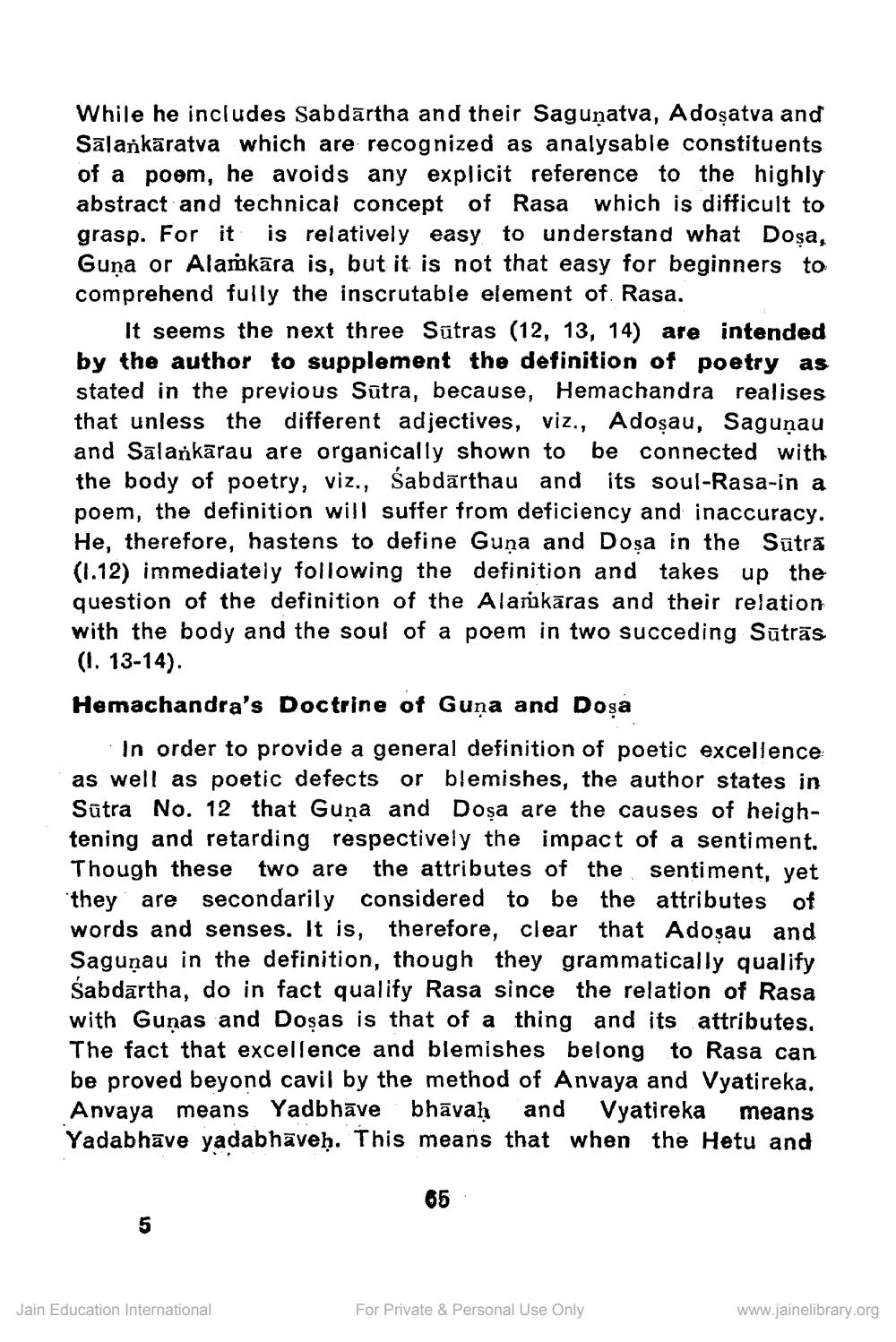________________
While he includes Sabdārtha and their Sagunatva, Adoşatva and Salankāratva which are recognized as analysable constituents of a poom, he avoids any explicit reference to the highly abstract and technical concept of Rasa which is difficult to grasp. For it is relatively easy to understand what Doşa, Guņa or Alamkāra is, but it is not that easy for beginners to comprehend fully the inscrutable element of. Rasa.
It seems the next three Sūtras (12, 13, 14) are intended by the author to supplement the definition of poetry as stated in the previous Sūtra, because, Hemachandra realises that unless the different adjectives, viz., Adosau, Sagunau and Salankārau are organically shown to be connected with the body of poetry, viz., Sabdārthau and its soul-Rasa-in a poem, the definition will suffer from deficiency and inaccuracy. He, therefore, hastens to define Guņa and Dosa in the Sūtra (1.12) immediately following the definition and takes up the question of the definition of the Alarkāras and their relation with the body and the soul of a poem in two succeding Sūtrās
(I. 13-14). Hemachandra's Doctrine of Guņa and Doşa
In order to provide a general definition of poetic excellence as well as poetic defects or blemishes, the author states in Sūtra No. 12 that Guna and Dosa are the causes of heightening and retarding respectively the impact of a sentiment. Though these two are the attributes of the sentiment, yet they are secondarily considered to be the attributes of words and senses. It is, therefore, clear that Adoşau and Sagunau in the definition, though they grammatically qualify Sabdartha, do in fact qualify Rasa since the relation of Rasa with Guņas and Doșas is that of a thing and its attributes, The fact that excellence and blemishes belong to Rasa can be proved beyond cavil by the method of Anvaya and Vyatireka. Anvaya means Yadbhāve bhāyaḥ and Vyatireka means Yadabhāve yadabhāveḥ. This means that when the Hetu and
65
Jain Education International
For Private & Personal Use Only
www.jainelibrary.org




